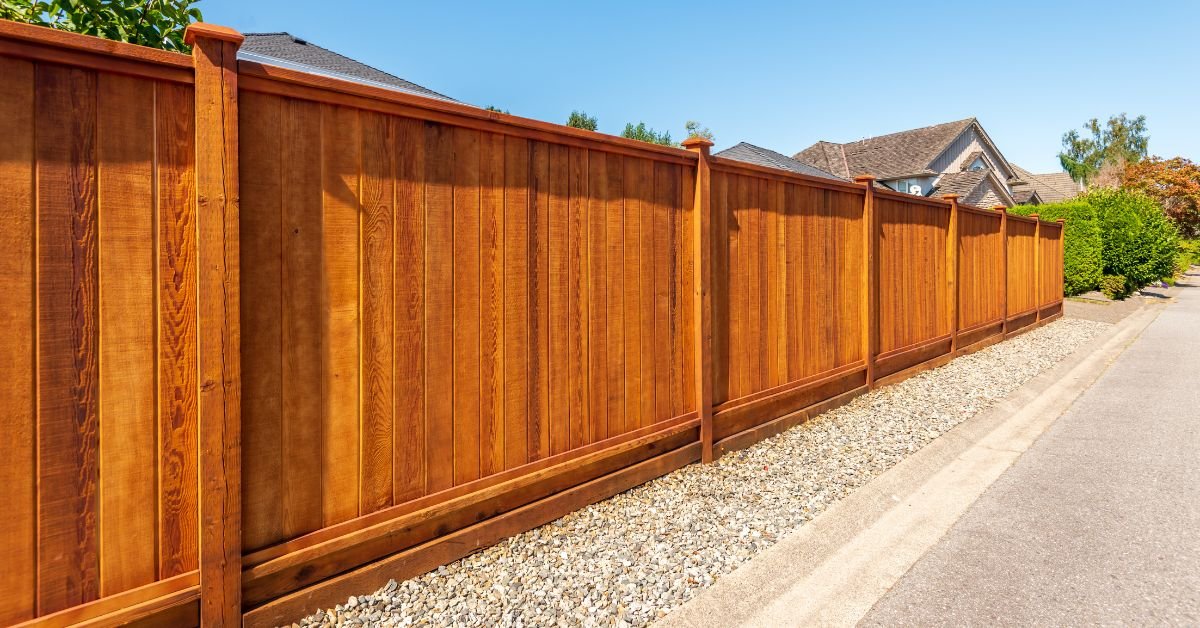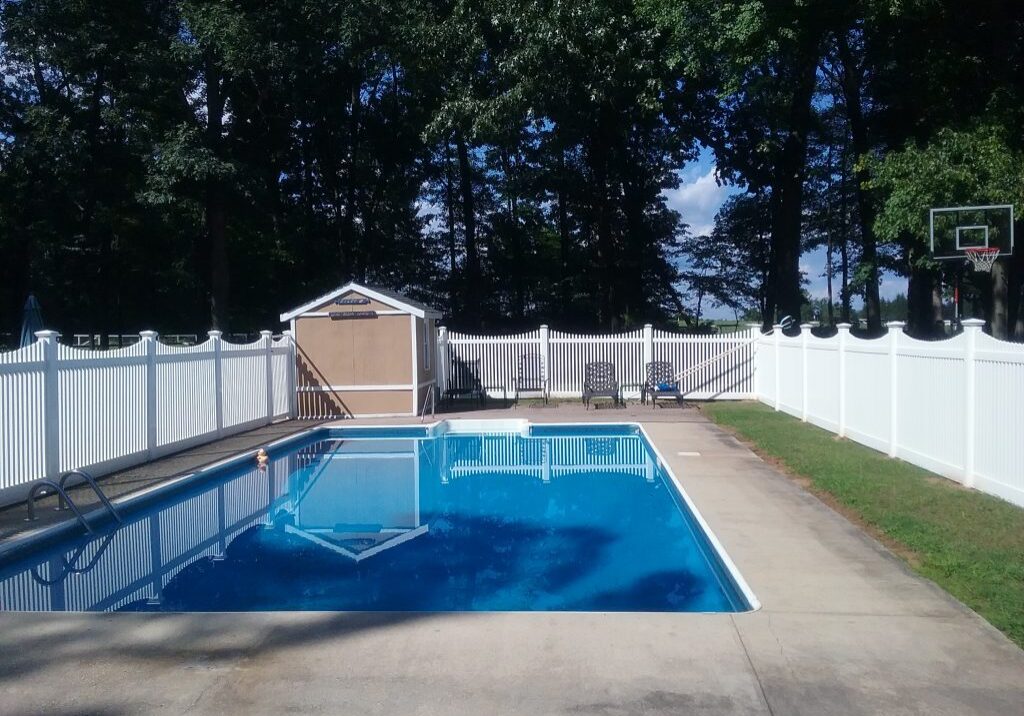All Categories
Featured
Picking ecologically responsible fencing materials helps lower your carbon footprint and sustains preservation initiatives. Allow's explore some of the best eco-friendly secure fencing alternatives that promote sustainability while likewise supplying sturdiness and style.
Conveniences: Bamboo needs very little water, pesticides, and fertilizers to expand. It is eco-friendly, lowering waste at the end of its life cycle. It is resistant and likewise sturdy to rot, guaranteeing longevity with correct treatment. Considerations: Bamboo may not be perfect for areas with harsh winter seasons or severe cool, as it can become fragile and split in freezing temperatures. 2. Recycled Products Fencing. Fencings made from recycled materials, such as post-consumer plastics, recovered timber, or recycled metal, are becoming increasingly prominent in eco-conscious layouts. These products reduce waste, preserve sources, and reduce the need for the removal of basic materials, which is helpful for the setting. By repurposing existing products, you add to reducing the need for new, energy-intensive production procedures.
Perks: Making use of recycled products helps divert waste from garbage dumps, minimizes ecological effect, and can lower your carbon impact. It is likewise a cost-effective solution in many cases. Considerations: The aesthetic of recycled product fences can vary, and some might not achieve the same natural look as typical timber fencings. Several manufacturers currently provide designs that replicate the look of timber or rock. 3. Compound Fencing. Composite fencing is made from a combination of wood fibers and plastic, commonly sourced from recycled web content. This kind of fencing supplies the look of timber with marginal upkeep, while also being environmentally friendly. Compound products are usually durable and immune to the elements, minimizing the requirement for frequent substitute or treatment with chemicals.
![]()
Advantages: Composite fencings are durable, low-maintenance, and can be made from recycled web content, assisting lower waste. They do not call for dangerous chemicals for preservation, unlike treated timber. Considerations: While composite fencing is sturdy, it tends to be more expensive in advance compared to typical timber. Its longevity and reduced upkeep might make it a more economical alternative over time. 4. Cedar and Redwood Fencing. Cedar and redwood are popular selections for environmentally-conscious secure fencing, as both products are naturally sturdy, resistant to degeneration, and call for minimal chemical treatments. These woods can be sustainably collected from properly handled woodlands, ensuring their eco-friendly condition. They additionally have a natural appeal that several homeowners appreciate, with abundant shades and textures that boost aesthetic allure.
Conveniences: Cedar and redwood fencings are resilient, normally pest-resistant, and have a low ecological effect when collected sustainably. They additionally have an ageless aesthetic and can blend seamlessly into natural landscapes. Considerations: While cedar and redwood are extra green than other kinds of timber, they are still wood products and call for proper maintenance to avoid degeneration. The price might additionally be higher compared to other materials. 5. Living Fencings (Hedges and Shrubs) For those seeking a more all-natural and eco-friendly choice, living fences, or hedges, are an excellent option. These are generally developed by growing dense bushes, trees, or climbing up plants to create an all-natural obstacle. Popular selections for living fences include bamboo, privet, and boxwood. These plants not just give privacy however additionally absorb co2, assist with dirt disintegration, and support local wild animals.
Perks: Living fencings boost air quality, add to biodiversity, and use a natural look that blends perfectly with the landscape. They likewise minimize sound air pollution and assist control temperature levels in your backyard. Factors to consider: Living fences call for regular maintenance, such as trimming and watering, and might not be suitable for every environment. They likewise need time to establish before they can offer full personal privacy. 6. Rock and Block Secure Fencing (Recovered) Rock and block are incredibly durable materials, and making use of recovered rock or brick can be an environmentally friendly way to create a fencing. By reusing these materials from old buildings or frameworks, you decrease the demand for new sources and decrease waste. Stone and block fences are solid, call for little upkeep, and provide an ageless seek to any property.
![]()
Perks: Redeemed rock and block fences are exceptionally lasting, low-maintenance, and supply excellent privacy and safety. They are additionally energy-efficient, as they help control temperature by functioning as natural insulators. Considerations: Installation of rock and brick fences can be a lot more expensive and labor-intensive than other products. In addition, these fencings may not be appropriate for all residential properties as a result of the weight and the requirement for appropriate setup. Final thought. Bamboo, recycled materials, composite fence, and cedar or redwood all provide sustainable choices to traditional materials. By picking one of these sustainable secure fencing products, you're making a favorable effect on the environment while developing a stunning and useful outside location.
- Bamboo Fence. Bamboo is among one of the most environment-friendly materials available for fencing. As one of the fastest-growing plants worldwide, bamboo is extremely sustainable, able to expand back rapidly after being gathered. Unlike hardwood trees, which can take years to develop, bamboo gets to full growth in simply a couple of years, making it a perfect lasting choice. Bamboo fences are strong, normally immune to parasites, and supply a beautiful, natural aesthetic.
Conveniences: Bamboo needs very little water, pesticides, and fertilizers to expand. It is eco-friendly, lowering waste at the end of its life cycle. It is resistant and likewise sturdy to rot, guaranteeing longevity with correct treatment. Considerations: Bamboo may not be perfect for areas with harsh winter seasons or severe cool, as it can become fragile and split in freezing temperatures. 2. Recycled Products Fencing. Fencings made from recycled materials, such as post-consumer plastics, recovered timber, or recycled metal, are becoming increasingly prominent in eco-conscious layouts. These products reduce waste, preserve sources, and reduce the need for the removal of basic materials, which is helpful for the setting. By repurposing existing products, you add to reducing the need for new, energy-intensive production procedures.
Perks: Making use of recycled products helps divert waste from garbage dumps, minimizes ecological effect, and can lower your carbon impact. It is likewise a cost-effective solution in many cases. Considerations: The aesthetic of recycled product fences can vary, and some might not achieve the same natural look as typical timber fencings. Several manufacturers currently provide designs that replicate the look of timber or rock. 3. Compound Fencing. Composite fencing is made from a combination of wood fibers and plastic, commonly sourced from recycled web content. This kind of fencing supplies the look of timber with marginal upkeep, while also being environmentally friendly. Compound products are usually durable and immune to the elements, minimizing the requirement for frequent substitute or treatment with chemicals.

Advantages: Composite fencings are durable, low-maintenance, and can be made from recycled web content, assisting lower waste. They do not call for dangerous chemicals for preservation, unlike treated timber. Considerations: While composite fencing is sturdy, it tends to be more expensive in advance compared to typical timber. Its longevity and reduced upkeep might make it a more economical alternative over time. 4. Cedar and Redwood Fencing. Cedar and redwood are popular selections for environmentally-conscious secure fencing, as both products are naturally sturdy, resistant to degeneration, and call for minimal chemical treatments. These woods can be sustainably collected from properly handled woodlands, ensuring their eco-friendly condition. They additionally have a natural appeal that several homeowners appreciate, with abundant shades and textures that boost aesthetic allure.
Conveniences: Cedar and redwood fencings are resilient, normally pest-resistant, and have a low ecological effect when collected sustainably. They additionally have an ageless aesthetic and can blend seamlessly into natural landscapes. Considerations: While cedar and redwood are extra green than other kinds of timber, they are still wood products and call for proper maintenance to avoid degeneration. The price might additionally be higher compared to other materials. 5. Living Fencings (Hedges and Shrubs) For those seeking a more all-natural and eco-friendly choice, living fences, or hedges, are an excellent option. These are generally developed by growing dense bushes, trees, or climbing up plants to create an all-natural obstacle. Popular selections for living fences include bamboo, privet, and boxwood. These plants not just give privacy however additionally absorb co2, assist with dirt disintegration, and support local wild animals.
Perks: Living fencings boost air quality, add to biodiversity, and use a natural look that blends perfectly with the landscape. They likewise minimize sound air pollution and assist control temperature levels in your backyard. Factors to consider: Living fences call for regular maintenance, such as trimming and watering, and might not be suitable for every environment. They likewise need time to establish before they can offer full personal privacy. 6. Rock and Block Secure Fencing (Recovered) Rock and block are incredibly durable materials, and making use of recovered rock or brick can be an environmentally friendly way to create a fencing. By reusing these materials from old buildings or frameworks, you decrease the demand for new sources and decrease waste. Stone and block fences are solid, call for little upkeep, and provide an ageless seek to any property.

Perks: Redeemed rock and block fences are exceptionally lasting, low-maintenance, and supply excellent privacy and safety. They are additionally energy-efficient, as they help control temperature by functioning as natural insulators. Considerations: Installation of rock and brick fences can be a lot more expensive and labor-intensive than other products. In addition, these fencings may not be appropriate for all residential properties as a result of the weight and the requirement for appropriate setup. Final thought. Bamboo, recycled materials, composite fence, and cedar or redwood all provide sustainable choices to traditional materials. By picking one of these sustainable secure fencing products, you're making a favorable effect on the environment while developing a stunning and useful outside location.
Latest Posts
Uncover the Premier Auto Repair Offers in Montclare, Chicago
Published May 28, 25
1 min read
Improve Your Residential Property with Expenses Door Solution
Published May 23, 25
1 min read
Discover Reduce Expenses on Car Maintenance with Montclare Auto Repair’s Special Deals
Published May 18, 25
1 min read